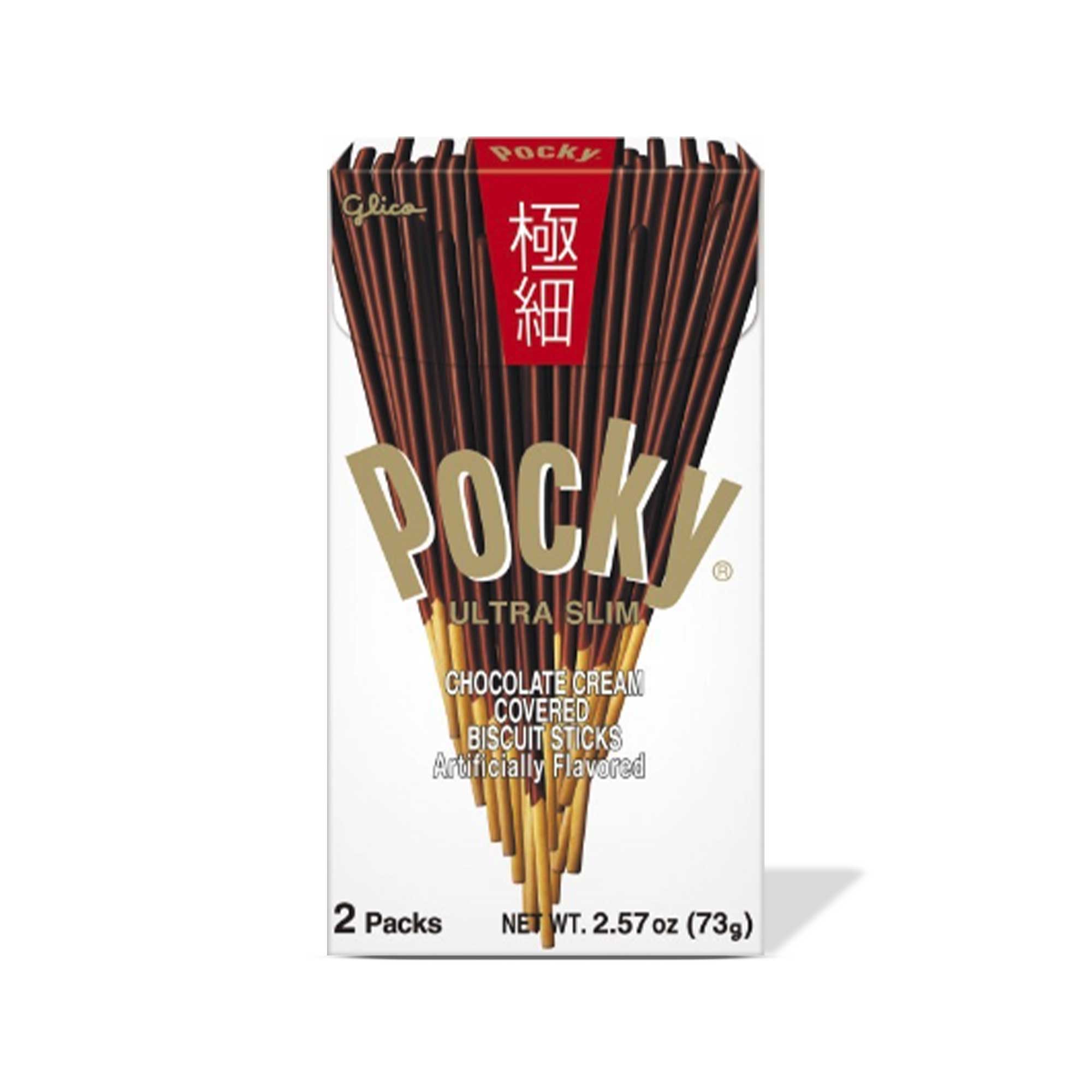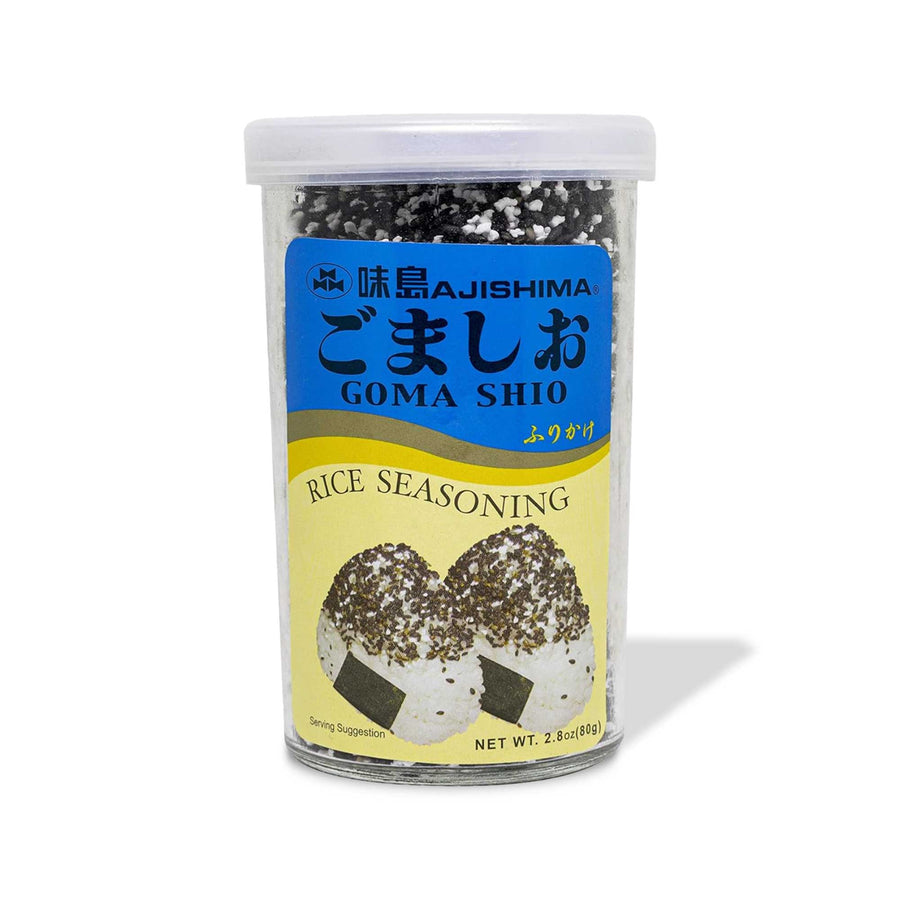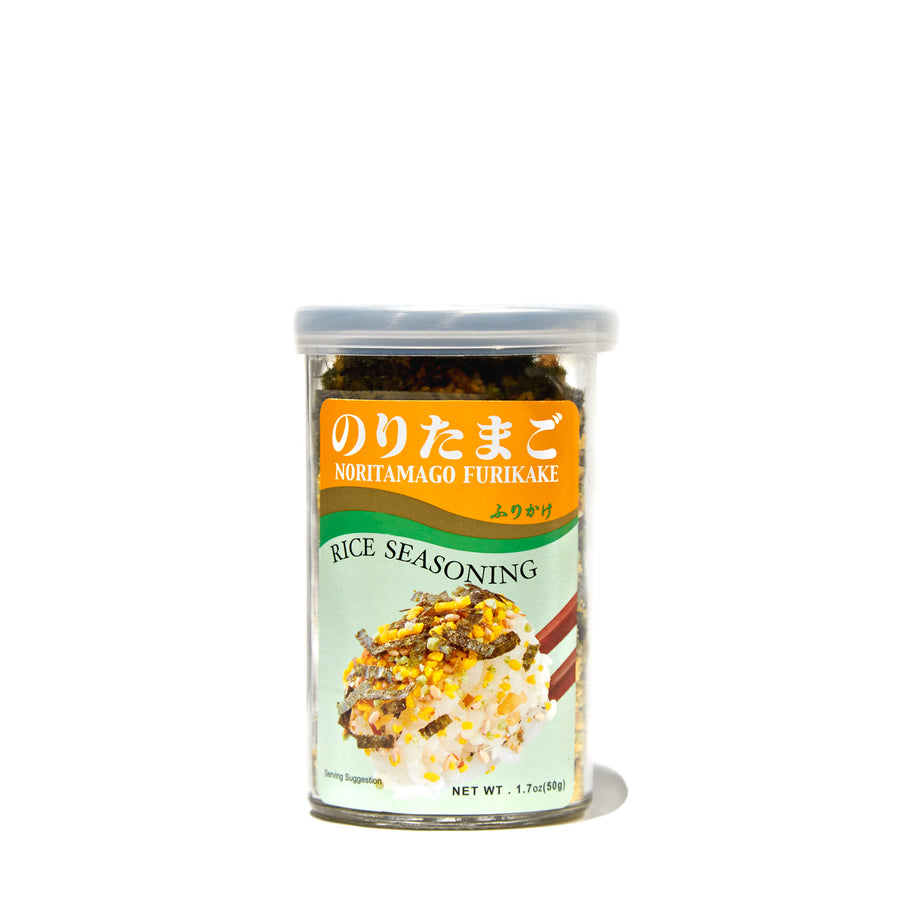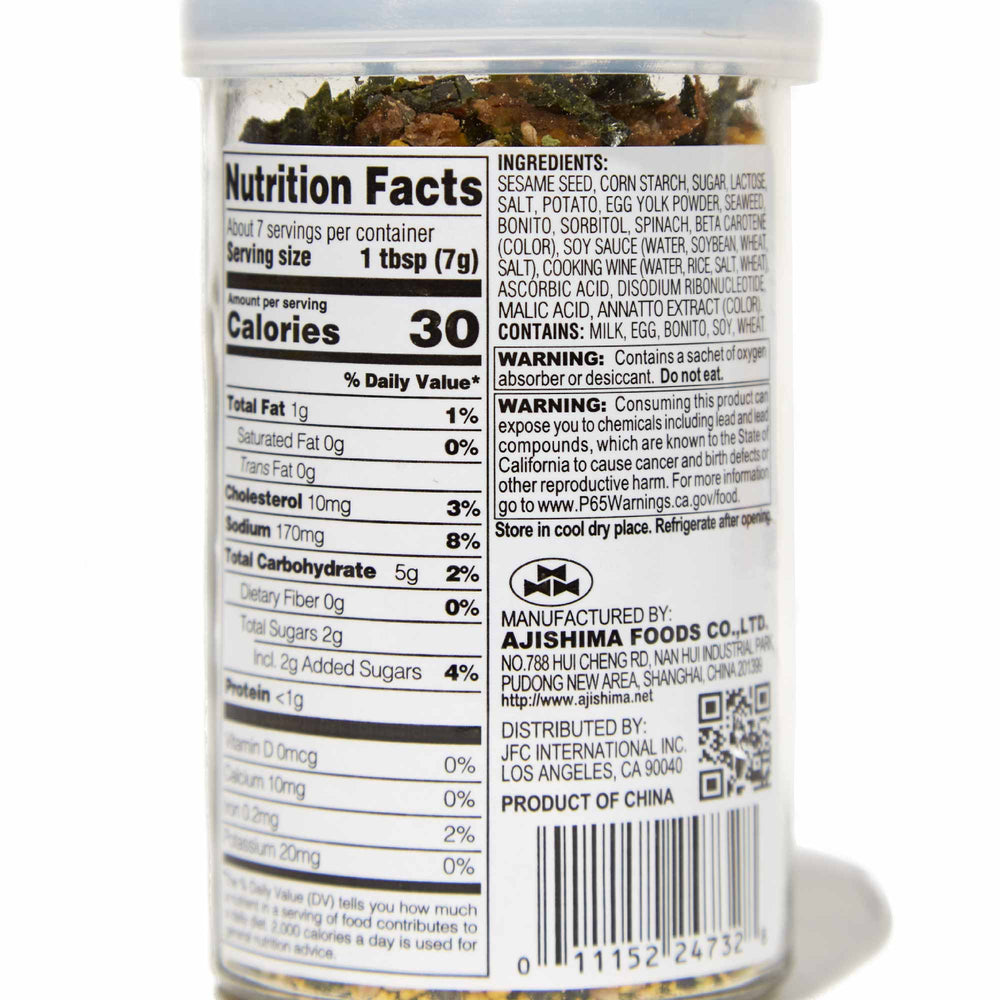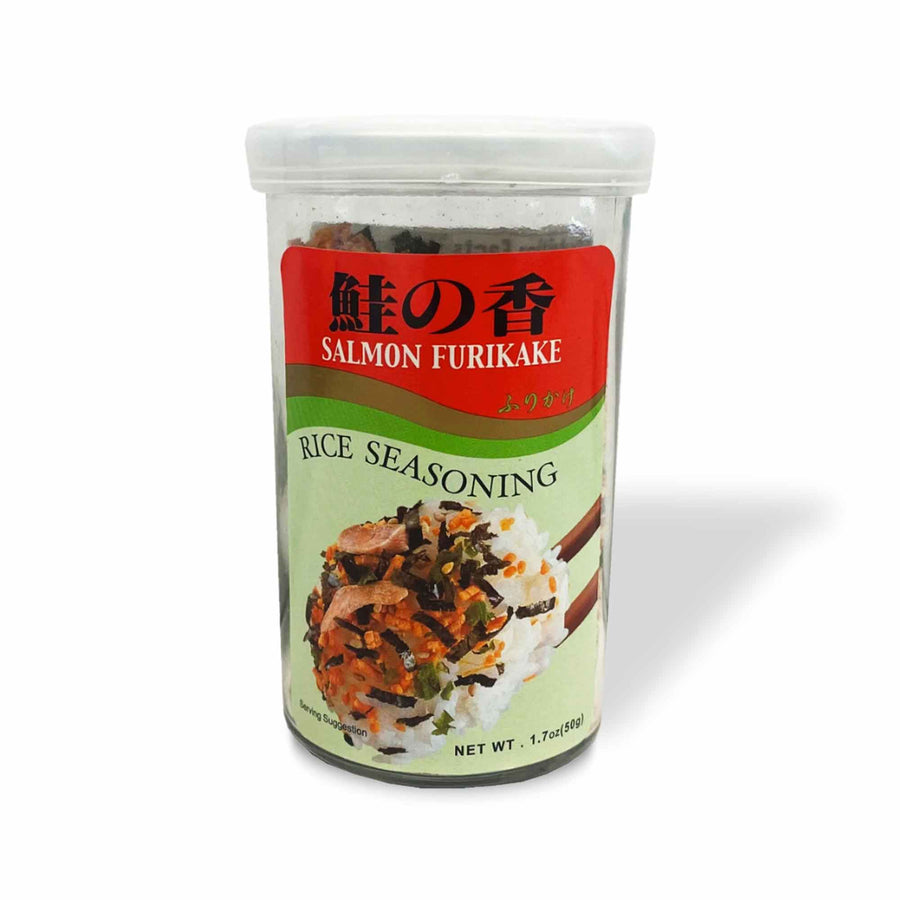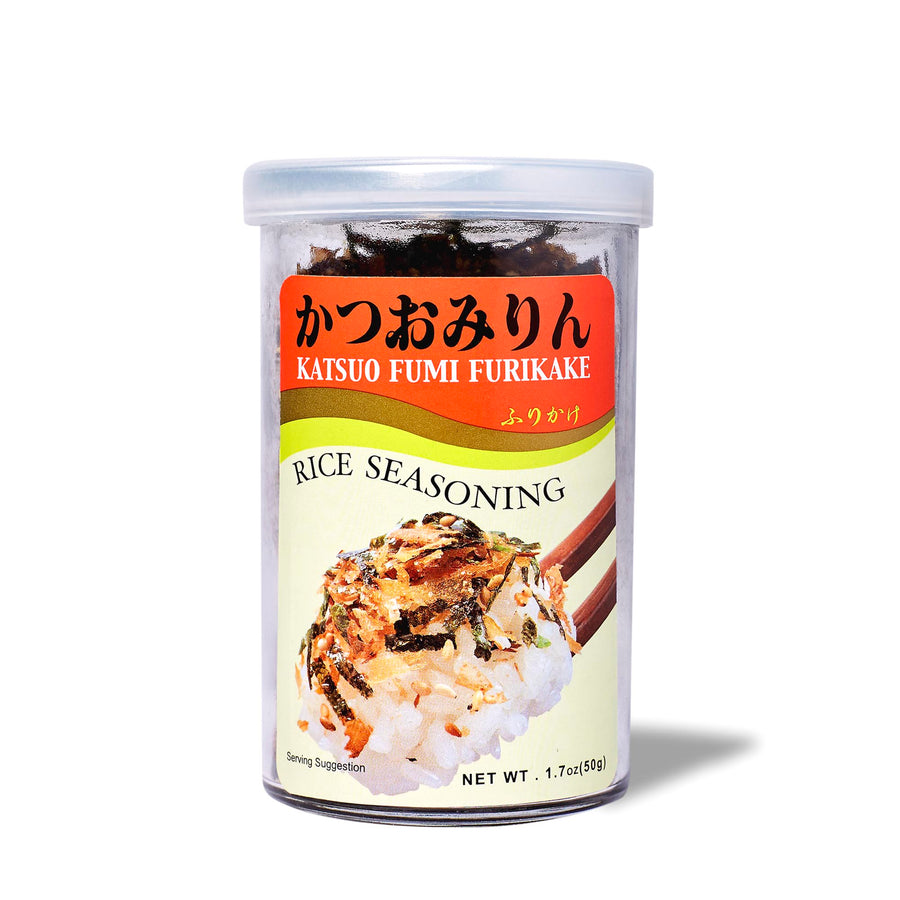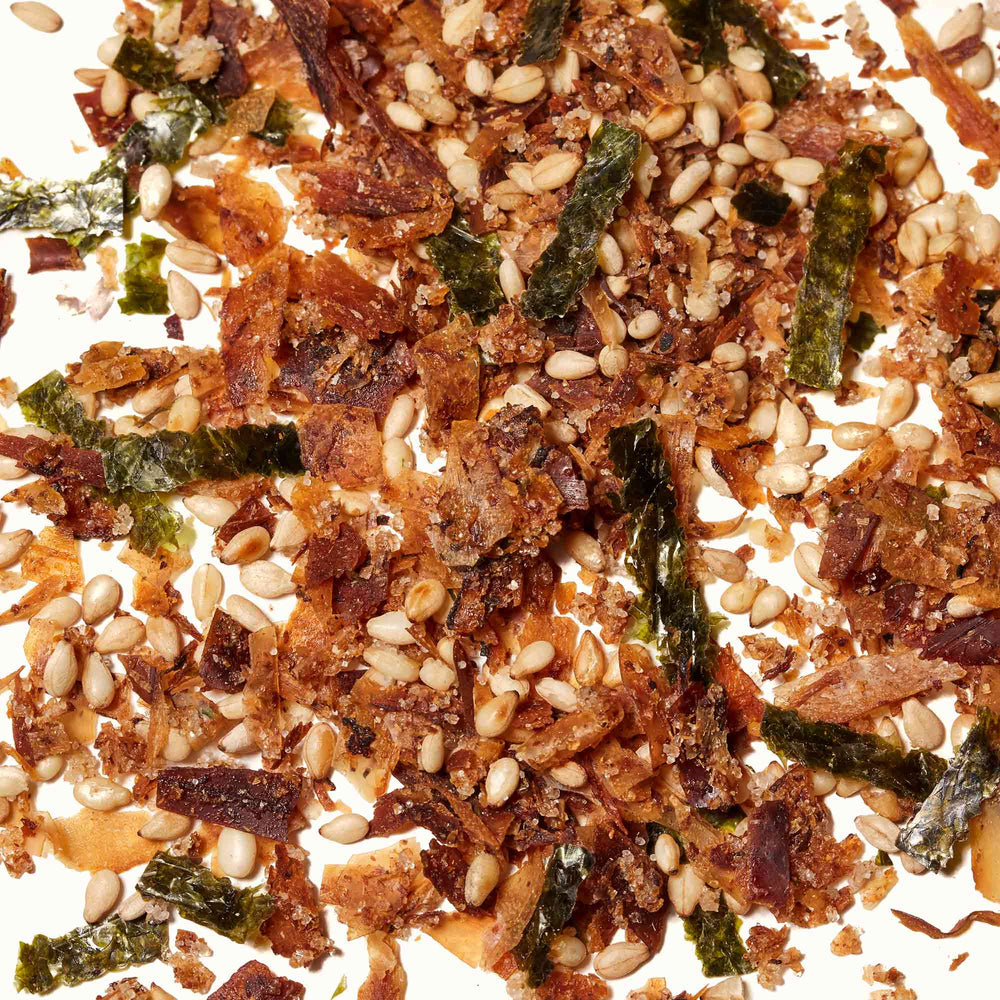Furikake: The Ultimate Guide to Japanese Rice Seasoning
Furikake, the most popular rice condiment in Japan, has caused a global sensation. This delicious and nutritious ingredient is a must-have in your kitchen if you love to eat or serve rice.
Furikake: A Staple of Japanese Cuisine
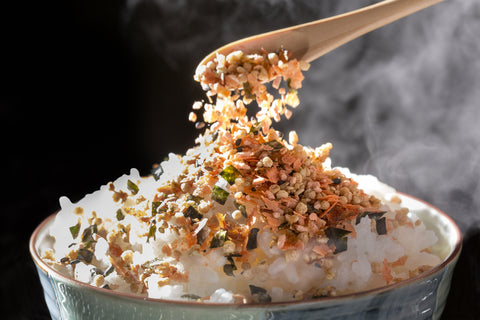
Furikake is a Japanese rice seasoning made from seaweed, toasted sesame seeds, and dried fish. There are many variations to this dry condiment, which translates to “sprinkled over” in English; however, the basic make-up is fairly consistent. People sprinkle furikake on rice or use it as an ingredient in the making of onigiri, Japanese rice balls. The story of the origins and evolution of furikake as a beloved rice seasoning is a long and exciting one.
In Japan, people first came up with the concept of furikake over 12 centuries ago. The initial idea was to make flakes out of salted dry fish, such as salmon and sharks, and use them as seasoning for food.
A more modern version of furikake was invented during the Taisho era of 1912–1926. At the time, people were used to eating simple meals with little or no side dishes or seasoning. Along came a scientist named Suekichi Yoshimaru to save the day. He wasn’t happy with Japan’s lack of calcium in traditional meals, so he decided to remedy this issue by making dried fish flakes into seasoning. The flakes were made from calcium-rich fish, sesame seeds, seaweed, and poppy seeds ground into powder. Suekichi called it Gohan no Tomo, meaning “a friend for rice.”
Despite being well-liked by households that tried the Japanese seasoning, it wasn't affordable to the general public. However, this changed after 1948, when Nissin Foods, a Japanese food company, manufactured a similar product on a large scale. The aim was to combat malnourishment with a calcium and protein nutritional supplement.
By 1959, the name furikake was used to describe these types of rice seasoning, and in a few years, they became widely available in supermarkets and stores.
Furikake is still popular today and it continues to play a role in supporting good health and culinary enjoyment.
Understanding Furikake: What Makes It Special
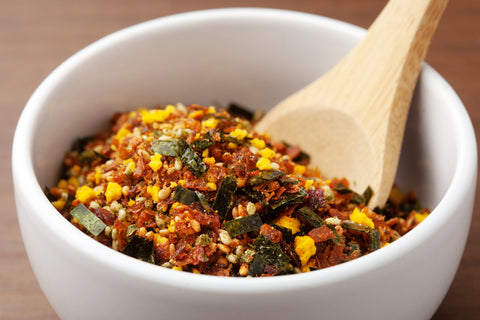
With countless seasoning products available on the market, one has to wonder what sets furikake apart from the others and why it is so good with rice. Let’s take a look at some of the answers.
1. Perfect Umami Flavor
The taste of umami is a core part of Japanese cuisine. It is considered the “essence of deliciousness,” a perfect blend of salty and savory flavors. Certain foods, such as plain rice, tend to have a bland taste and furikake remedies that by adding umami flavors to the dish. Bonito flakes and seaweed are the main sources of umami in furikake seasoning. More on that later in this post!
2. Crunchy Seasoning
Furikake should also bring a salty crunch to any dish. Remember that it's a dry condiment; hence, you will taste some nuttiness thanks to ingredients like sesame seeds. This adds a crunchy dimension that works well with rice.
3. Versatility
An ingredient is only as popular as its usefulness. People love the immense versatility of furikake seasoning. You can sprinkle it on rice, mix it with salads, and add it to noodles.
4. Healthy Nutrients
As we mentioned earlier, furikake is an excellent source of calcium, vitamin D, protein, and iodine. Using certain ingredients to make it will also provide additional nutrients.
The Nutritional Benefits of Furikake
So far, we’ve discussed the savory taste of furikake, but only a little has been said about the nutrients it offers and how they impact the body. Compared to other condiments, furikake’s nutrient profile is one of the most impressive we’ve seen.
A Healthy Addition to Your Diet
Let's consider the health advantages of incorporating furikake into your meals.
-
Calcium: It helps with bone development and improves the functionality of muscles and nerves.
-
Protein: It builds muscles, improves brain functions, and boosts the immune system.
-
Iodine: It aids the process of metabolism in the body.
-
Vitamin D: It helps with bone development and weight management.
The Key Ingredients of Furikake

Like with any traditional Japanese cuisine, there’s always room for creativity when making furikake. However, you still need to add key ingredients to your furikake if you want to achieve all of the attributes we listed above.
Sesame Seeds: The Heart of Furikake
The sesame plant produces seeds that are used for making various meals and condiments, including furikake. White sesame seeds are more common in furikake recipes than black ones, although both are acceptable. The seeds are ground and toasted, releasing nutritious oil that improves the texture of the seasoning. Crispy sesame seeds are responsible for the nutty flavor that gives furikake its undeniable crunchiness.
Nori Seaweed: A Taste of the Ocean
Nori seaweed is another key furikake ingredient. It’s made from special red algae that creates a strong umami flavor when added to food. It also gives furikake the taste of fresh seafood from the ocean.
Bonito Flakes: The Umami Powerhouse
If you’re a fan of Japanese dashi, you’ve probably eaten bonito flakes many times. Also called katsuobushi, bonito flakes are mostly made by fermenting, smoking, and simmering skipjack tuna. The role of bonito flakes in furikake is similar to their role in dashi broth. They serve as the main source of umami by unleashing a savory, salty taste with seafood flavoring.
Homemade Furikake: Crafting Your Blend
Now that you know the main furikake recipe ingredients, you can get to work crafting the perfect seasoning. The entire process is easy, as you’ll find in our guide:
Selecting Your Ingredients
Below is the complete list of ingredients you need to get for homemade furikake. It also doubles as a guide to help you choose the right materials.
Sesame seeds: The best kinds of sesame seeds emit a distinct, nutty aroma. If you find white or black sesame seeds that smell bad, we strongly recommend that you avoid buying them.
Nori seaweed: You have good-quality nori on your hands, unaffected by other seaweed or impurities, if it has a focused umami taste and not a mix of different flavors. The nori should also have a crisp texture.
Bonito flakes: If you’re buying pre-shaved bonito flakes, look out for organic products. Be sure to check the package and avoid products with many artificial flavors or colorings. Freshness is also important. The product should either disclose a specific production date or offer a freshness guarantee.
Salt: You need to add salt to your furikake because it provides better flavor balance. Consider using rock salt instead of regular table salt. It’s a healthier option and mixes well with other furikake ingredients. Ajishima Goma Shio Black Sesame & Rock Salt Furikake uses rock salt and offers the perfect blend of umami-rich flavors.
Sugar: In our opinion, this is the only optional ingredient. It offers a subtle contrast to the savory nature of the others and is worth a try!
Below are extra ingredients you can add to give your seasoning new flavors:
-
Kelp powder
-
Miso powder
-
Mirin
-
Sesame oil
-
Dried shiso leaves
-
Shiitake powder
-
Red pepper chili flakes
-
Soy sauce
-
Dulse
-
Wasabi powder
The Process: Mixing and Toasting
All of your ingredients are ready, and it’s time to make your first homemade furikake. Follow this simple process for the best results:
-
Grind sesame seeds with a blender or food processor. Doing this releases the natural oil
-
Put the ground seeds in a frying pan and toast over low heat for 8 to 9 minutes. It should turn golden and produce a fragrant aroma. Remember to occasionally stir the contents with a wooden spoon.
-
Tear or cut the nori seaweed into bits with your hands, knife, or scissors.
-
Put all the other ingredients (key and additional) in a pan and cook until they are dry and separate.
-
Mix the ground sesame seeds, shredded nori, and other ingredients in an airtight jar.
Your homemade furikake is ready. Scroll to the end of this post for storage tips. For now, let’s explore different ways to enjoy your seasoning.
Varieties of Furikake: Exploring Different Flavors

You don’t have to stick to one flavor of furikake rice seasoning. It has a wide variety of different flavors that you can try. These variations involve replacing ingredients in the original recipe with new ones or adding extra ingredients.
Let’s discuss the wide range of flavors and ingredients found in furikake and how they affect the flavor it adds to cooked rice and other dishes.
1. Nori Tama
The term “Nori tama” is short for “Nori tamago” (dried seaweed egg). Egg powder granules are the special ingredient. It can also contain other traditional ingredients, like sesame and bonito flakes. If you’d like to give the flavor a try, we recommend Ajishima Nori Tamago Furikake.
2. Salmon
Some furikake recipes contain dried salmon flakes. Nori and spring greens can be used interchangeably here. Although salmon furikake is great on rice, it's the perfect seasoning for green tea chazuke soup. Also, fans of salmon onigiri will love adding Ajishima Salmon Furikake to the dish.
3. Soy Sauce
Soy sauce is sometimes added and dried with the other ingredients. It serves as additional seasoning alongside salt, sugar, or sake.
4. Shiso
Another delicious take on furikake uses dried shiso or perilla leaves. They are mostly wrapped around onigiri or sushi, but they also make fantastic rice seasoning.
5. Wasabi
Dried wasabi brings a spicy perspective to furikake. For this recipe, whole sesame seeds are preferred to the ground type.
6. Poppy Seeds
Remember Suekichi Yoshimaru, the scientist who many consider the inventor of 20th-century furikake? Well, he used poppy seeds, sesame seeds, fish bones, and seaweed in the original recipe. Modern versions of the recipe include miso powder, shiitake powder, and red pepper chili flakes.
Using Furikake in Japanese Cuisine

Sprinkling furikake on rice may be a common practice, but that should never stop you from enjoying your seasoning with other foods.
Beyond Steamed Rice: Creative Uses
Here are some innovative ways to incorporate furikake into various dishes:
-
Avocado toast: Mash the avocado, spread it on toast, and sprinkle furikake on it.
-
Pasta: Pastas such as udon noodles, lasagne, and spaghetti could do with some furikake. Add olive oil and soy sauce for an unforgettable experience.
-
Salad: Add umami flavor to healthy salads.
-
Eggs: Whether you like your eggs scrambled or fried, furikake is an awesome seasoning for them.
-
Potato wedge: Before you bake the wedges, coat them in furikake.
-
Popcorn: Add a savory taste to your popcorn by simply sprinkling furikake on it.
Rice Balls: A Classic Furikake Application
The second most common use of furikake is as a seasoning for onigiri, a type of Japanese rice ball. These dishes are typically hand-shaped to form round or triangular balls. They may be simple but furikake is the key to turning rice balls into flavorful treats. It not only serves as a seasoning but also helps with food preservation.
Furikake for Every Meal: Breakfast to Dinner

Let’s assume you have homemade or store-bought furikake. There are dozens of different ways to use it during breakfast and dinner.
Elevating Breakfast
What better way to start off your day than with a tasty helping of umami-flavored breakfast meals? Foods like avocado toast, miso soup, onigiri, grilled fish, and eggs taste fantastic in the morning and even better with some seasoning sprinkled on them.
Dinner Sides and Main Courses
The Japanese condiment will also enhance evening meals such as ramen, tempura, udon, sushi, and sukiyaki. Rice is another popular evening meal in Japan. As you enjoy these dishes, don’t forget to put the leftovers in a bento box.
Storing and Preserving Furikake
The last thing you want to do is waste time and money on furikake that goes bad before you get the chance to properly enjoy it.
Keeping Furikake Fresh
Here are the best practices for storing furikake to maintain its flavor and freshness:
-
Your furikake has gone bad if the color starts to fade, the flavor weakens, or a dull aroma emanates from it.
-
Don’t place it in direct sunlight or moisture. A cool, dark cabinet is the ideal choice.
-
After taking some seasoning from the airtight container, be sure to reseal it properly.
-
Keep moisture from getting into the container by drying all utensils used.
-
Store-bought furikake can last several months; however, homemade furikake will only last for 3 to 4 days. Remember to check the expiration dates of every store-bought item you buy.
-
After opening the seasoning, you can keep the container in the fridge to extend shelf-life up to a month. Vegan furikake (with no fish) can last up to six months.
Furikake's Place in Modern Kitchens
Nearly any dish tastes better with a sprinkle of furikake, and more people around the world are recognizing it. Once the darling of 20th-century Japanese cuisine, this seasoning has become a global staple among lovers of umami thanks to its versatility in contemporary cooking.
Some prefer store-bought furikake, while others like to experiment with different ingredients at home. Our recommendation is that you try both and see which one you like better. While shopping for rice seasoning, trust Bokksu Market to bring you the very best, such as Ajishima Katsuo Fumi Bonito Furikake, which uses fresh ingredients and is the closest to homemade you can find.
Feel free to try as many products or recipes as you like while bringing new versions of umami goodness to each meal.
Author Bio


